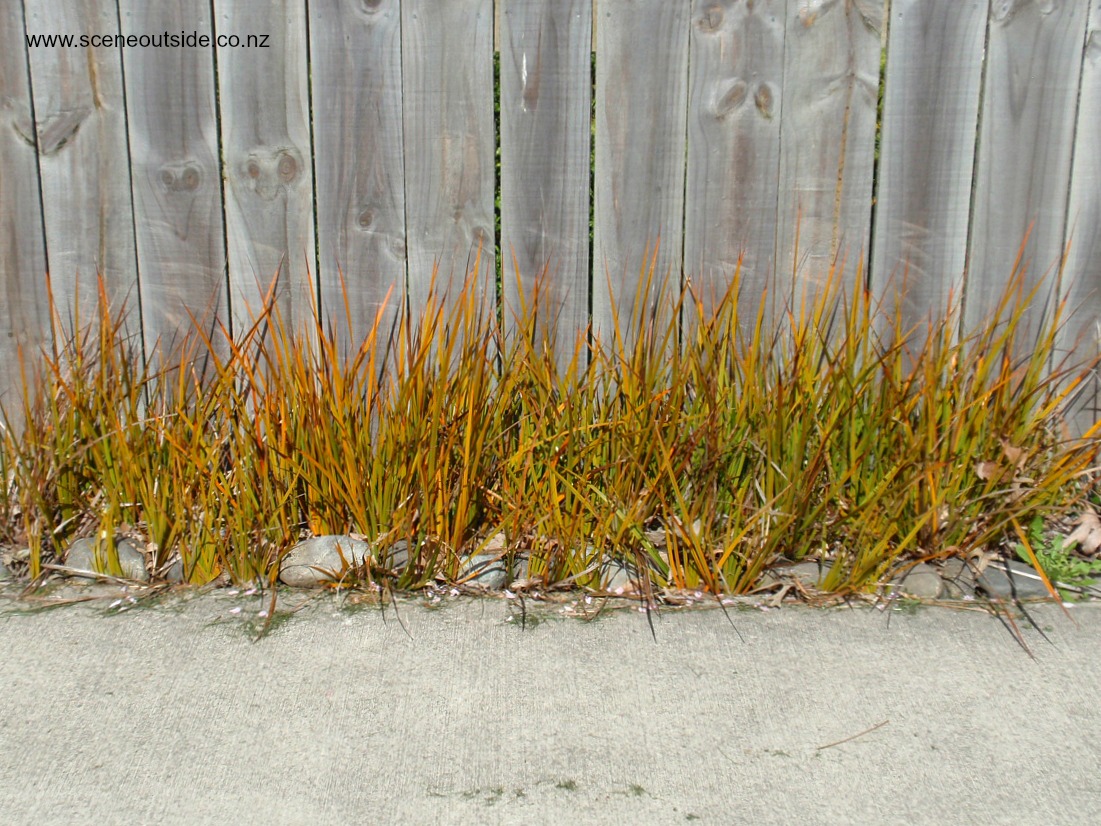

Libertia peregrinans
mikoikoi; New Zealand iris; creeping iris
Evergreen herbaceous perennial, endemic to New Zealand, named after Dutch botanist Madame Libert. The specific epithet 'peregrinans' is derived from the Latin word for 'to wander', and alludes to the fact that Libertia peregrinans spreads via rhizomes from which new leaves emerge. Stiff, upright foliage, arranged in fans. In full sun, the leaves are predominantly orange in colour, intensifying during the colder months. In partial shade they are olive green with shades of orange or copper, and in full shade the foliage is green. Flowering in spring with panicles of white flowers, 1-3 cm across, followed by green barrel-shaped capsules, gradually turning orange, yellow or black.
Libertia peregrinans used to be widespread in New Zealand along the coast and margins of swamps, but has declined due to changes in (and/or loss of) its natural habitat. Is is however very common in cultivation.
A position in full sun is best for the brightest foliage colour, but will also grow happily in partial shade. Any well-draining soil. Tolerates wind and dry conditions. Suitable for coastal gardens. Very easy to propagate by means of division. Frost-hardy to about -12 deg Celsius (Zones 8-10).
Looks great when planted in groups, making a bold, bright statement, in particular during winter. Libertia peregrinans spreads easily by itself, so if you wish to contain it in a particular area in your garden, make sure you remove the new tufts of leaves (including their roots) that spring up at various distances from the mother plant.
Type of plant
Herbaceous - PerennialSize
0.4 m x 0.4 mLandscape Use
foliage colour, ground cover, coastal gardensSpecifications
- Temperature: Hardy
- Light: Medium High
- Moisture: Low Medium
- Soil: Light Medium Heavy
- Wind tolerance: High
- Coastal tolerance: High


